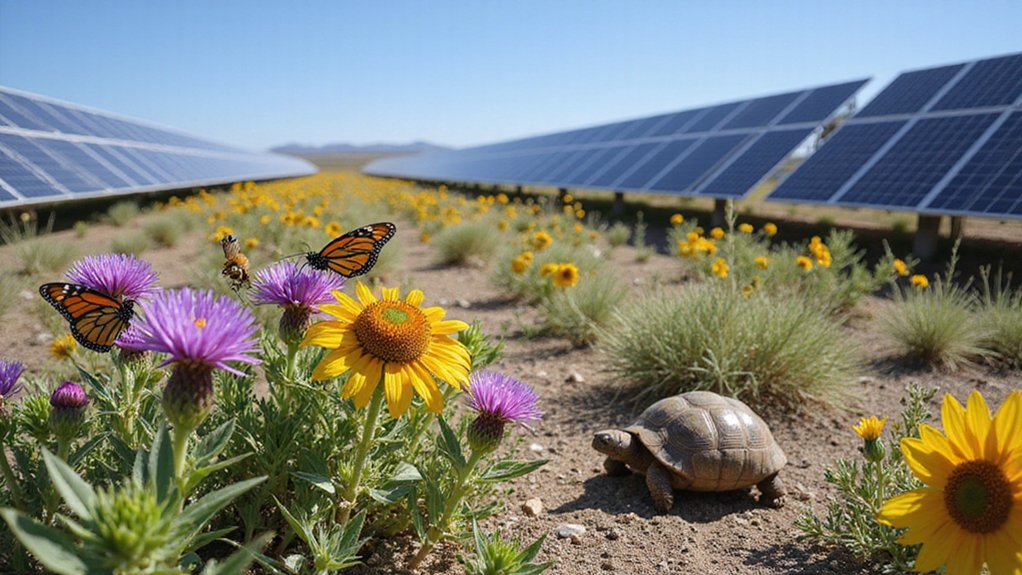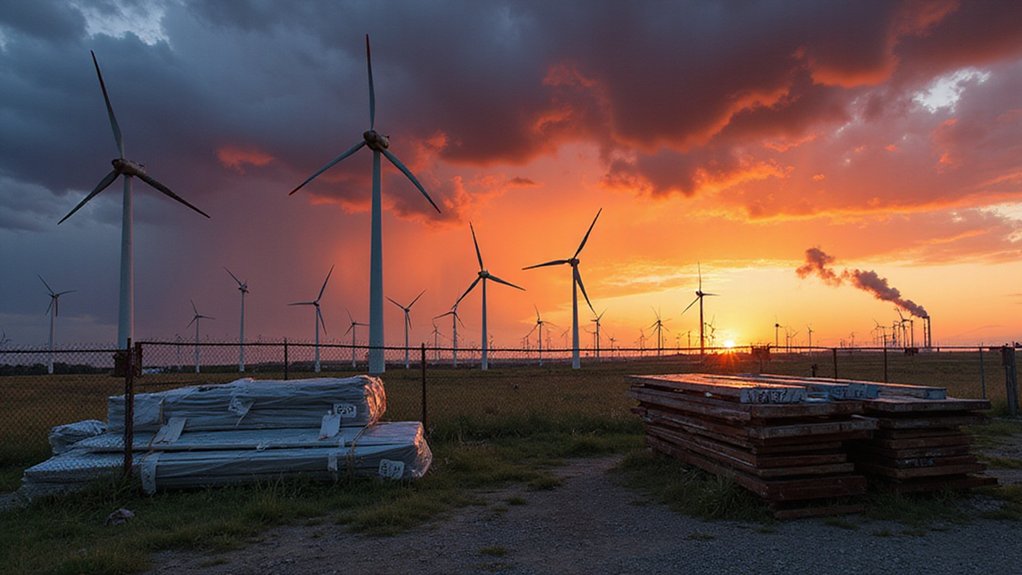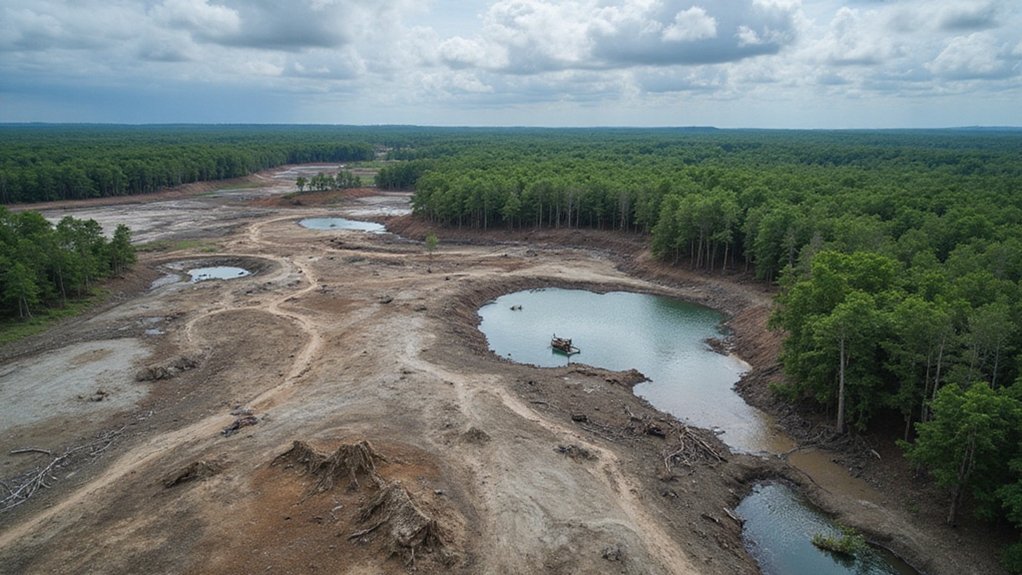While renewable energy projects initially disrupt habitats, evidence shows they can evolve into thriving ecosystems. Solar farms with native vegetation have tripled insect abundance and increased bee populations 20-fold. These sites support pollinators that benefit nearby crops. Wind turbines do pose risks to birds, but modified designs reduce fatalities. The renewable energy environment presents a complex balance between clean power generation and biodiversity protection. The solutions may surprise conservationists.
While renewable energy offers a cleaner alternative to fossil fuels, its growing footprint raises serious concerns about habitat loss and wildlife impacts. Solar farms can stretch across thousands of acres, directly destroying natural habitats. Wind turbines pose collision risks for birds and bats. Construction of these energy sources damages the land’s natural layout and forces animals to relocate.
Large renewable projects increase demand for land at the expense of biodiversity. This threatens endangered species like the Mojave desert tortoise. Energy production sites reduce space for plants and animals, even with regulations in place. The infrastructure creates barriers to animal movement, limiting access to food, water, and breeding grounds.
Expanding renewable footprints threatens biodiversity, creating barriers that limit wildlife access to essential resources.
Habitat fragmentation from roads, transmission lines, and structures makes wildlife populations more vulnerable to local extinction. Isolated animal groups experience reduced genetic diversity. Endangered plants face special challenges since they cannot relocate when construction threatens them. In 2022, Tiehm’s buckwheat, a rare wildflower, was endangered by a proposed lithium mine. Modifying wind turbine blades to different colors has shown promise in reducing bird fatalities during operation. Statistical data reveals wind turbines cause significantly fewer bird deaths compared to other human structures, accounting for 0.5 million avian fatalities annually.
However, recent research shows renewable energy sites can actually support biodiversity when properly designed. Solar facilities planted with native vegetation can provide critical habitat for pollinators. Studies show insect abundance tripled at habitat-friendly solar sites. Native bee populations increased 20-fold at restored locations.
These benefits extend beyond the solar farm. Insect pollinators from these sites visit nearby farmland, improving crop production. This creates agricultural synergies, easing land use conflicts when farmland converts to energy production. The beneficial insect community response occurred in less than five years after habitat restoration.
The challenge for governments is finding integrated approaches to increase renewable power without compromising biodiversity. With thoughtful planning, solar fields can foster abundant wildlife while producing clean energy. Chinese solar manufacturing leadership has contributed significantly to making solar panels more affordable globally, accelerating the potential for wildlife-friendly installations. The evidence suggests renewable energy sites don’t have to be ecological deserts—they can become thriving ecosystems supporting both energy needs and biodiversity.
References
- https://www.endangered.org/how-renewable-energy-impacts-biodiversity/
- https://www.anl.gov/evs/article/if-you-build-it-they-will-come-how-habitatfriendly-solar-energy-can-synergize-with-biodiversity
- https://www.nrel.gov/news/program/2024/utility-scale-solar-fields-can-foster-abundant-biodiversity.html
- https://sustainability-directory.com/question/what-statistics-indicate-the-impact-of-renewable-energy-on-biodiversity/
- https://www.oecd.org/content/dam/oecd/en/publications/reports/2024/01/mainstreaming-biodiversity-into-renewable-power-infrastructure_b9d9528d/357ac474-en.pdf








